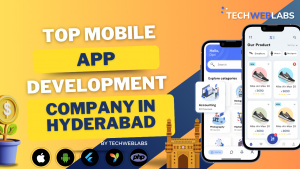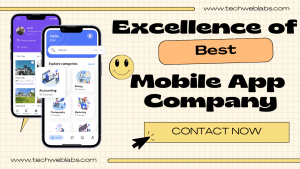On Demand Delivery App Development: Revolutionizing Convenience
Introduction
In today’s fast-paced world, convenience is the key to success. With the rise of smartphones and mobile apps, on demand delivery has become a game-changer in various industries. Whether it’s ordering food, getting a ride, or even receiving groceries at your doorstep, on demand delivery apps have revolutionized the way we interact with goods and services. In this article, we will explore the ins and outs of on demand delivery app development, discussing the technology behind it, the challenges faced, and the potential it holds for businesses and consumers alike.
On Demand Delivery App Development: An Overview
In this section, we will delve into the fundamental concepts of on demand delivery app development and explore its impact on various industries.
Understanding the On Demand Economy
The on demand economy refers to the ecosystem of goods and services that are instantly available to consumers through mobile apps. From transportation and food delivery to household services, the on demand economy has reshaped traditional business models, providing greater convenience and efficiency.
Key Features of On Demand Delivery Apps
On demand delivery apps boast a range of features that contribute to their seamless functionality. These features include real-time tracking, secure payment gateways, user-friendly interfaces, and ratings and reviews, enabling users to make informed choices.
“On Demand Delivery App Development Challenges”
Developing on demand delivery apps comes with its own set of challenges. Let’s explore the obstacles faced by developers during the app development process.
App Development Process
Creating a successful on demand delivery app requires careful planning, development, and implementation. In this section, we will outline the step-by-step app development process.
Market Research and Ideation
Understanding market demands and identifying potential opportunities are crucial in the ideation phase. Developers need to conduct extensive research to validate their app concepts and ensure they cater to specific user needs.
Choosing the Right Technology Stack
The choice of technology stack plays a significant role in determining the app’s performance and scalability. Developers must select the appropriate programming languages, frameworks, and databases to ensure a robust application.
Building the Minimum Viable Product (MVP)
Creating an MVP allows developers to test the core features of the app with real users and gather feedback for further improvements. It also helps in reducing development costs and time-to-market.
Designing the User Interface (UI) and User Experience (UX)
The UI/UX design is critical in providing users with an intuitive and visually appealing experience. Seamless navigation, attractive visuals, and smooth interactions enhance user engagement and retention.
Development and Testing
The development phase involves coding the app’s functionalities according to the design specifications. Rigorous testing is carried out to identify and fix bugs, ensuring the app’s stability and performance.
Launch and Deployment
Before the app’s official launch, developers need to optimize it for various devices and app stores. A well-executed launch plan maximizes visibility and attracts a substantial user base.
“On Demand Delivery App Development Trends”
Stay ahead in the on demand delivery app industry by understanding the latest trends and innovations.
Future Trends in On Demand Delivery Apps
As technology continues to evolve, so does the landscape of on demand delivery apps. Let’s explore the future trends shaping the industry.
Integration of AI and Machine Learning
Artificial Intelligence and Machine Learning are being integrated into on demand delivery apps to optimize routing, predict user preferences, and enhance overall efficiency.
Hyperlocal Delivery
Hyperlocal delivery enables users to receive goods from nearby stores or restaurants in a matter of minutes, eliminating the need for warehouses and reducing delivery time.
Sustainability and Green Delivery Solutions
In response to environmental concerns, on demand delivery apps are adopting eco-friendly practices, such as using electric vehicles and sustainable packaging.
Blockchain and Secure Transactions
Blockchain technology is enhancing the security of payment transactions and ensuring the authenticity of delivered goods.
“On Demand Delivery App Development for Businesses”
Discover how on demand delivery apps benefit businesses, improve customer satisfaction, and increase revenue.
Benefits for Businesses
On demand delivery apps offer several advantages to businesses across various industries.
Expanded Customer Base
By reaching a wider audience, businesses can increase their customer base and boost sales.
Enhanced Operational Efficiency
Streamlined operations, efficient logistics, and optimized delivery routes result in enhanced efficiency and cost savings.
Customer Loyalty and Retention
On demand delivery apps allow businesses to engage with customers regularly, promoting loyalty and repeat purchases.
Real-Time Data Insights
Access to real-time data on consumer behavior and preferences helps businesses make data-driven decisions.
Improved Brand Visibility
Having a presence on popular delivery apps enhances a brand’s visibility and credibility in the market.
“On Demand Delivery App Development for Consumers”
Explore how on demand delivery apps empower consumers, providing them with unparalleled convenience and access to a wide range of services.
Benefits for Consumers
On demand delivery apps have transformed the consumer experience in numerous ways.
Convenience at Fingertips
With just a few taps, consumers can access goods and services from the comfort of their homes.
Time and Cost Savings
Avoiding the need to travel and the ability to compare prices save consumers time and money.
Personalized Experiences
On demand delivery apps offer personalized recommendations based on user preferences and past orders.
Safety and Hygiene
Especially during the pandemic, contactless deliveries have become crucial in ensuring safety and hygiene.
24/7 Availability
On demand delivery apps operate round-the-clock, providing instant solutions to consumers’ needs.
FAQs
Q: How much does it cost to develop an on demand delivery app?
A: The cost of developing an on demand delivery app varies based on factors such as features, complexity, platform, and development team rates. On average, it can range from $30,000 to $150,000 or more.
Q: How long does it take to build an on demand delivery app?
A: The time required to develop an on demand delivery app depends on its complexity and features. Generally, it takes around 4 to 6 months from ideation to launch.
Q: What technologies are used in on demand delivery apps?
A: On demand delivery apps typically utilize technologies like GPS for real-time tracking, payment gateways for secure transactions, and AI for optimized route planning.
Q: How do on demand delivery apps ensure the safety of delivered goods?
A: On demand delivery apps implement safety measures like real-time tracking, tamper-proof packaging, and verified delivery partners to ensure the safety of delivered goods.
Q: Can on demand delivery apps be customized for specific industries?
A: Yes, on demand delivery apps can be tailored to suit various industries, including food delivery, grocery delivery, healthcare, and more.
Q: How can businesses promote their on demand delivery apps?
A: Businesses can promote their on demand delivery apps through social media marketing, app store optimization, influencer partnerships, and referral programs.
Conclusion
On demand delivery app development has undoubtedly transformed the way we access goods and services. With its seamless convenience, businesses and consumers have benefited alike. As technology advances, on demand delivery apps will continue to evolve, enhancing efficiency, sustainability, and overall user experience. Embracing this trend is crucial for businesses seeking growth in today’s competitive landscape.

